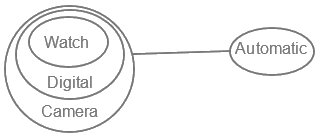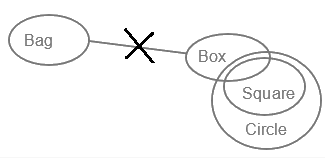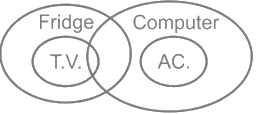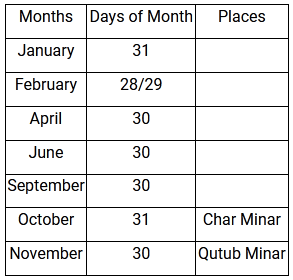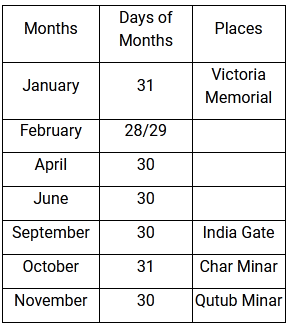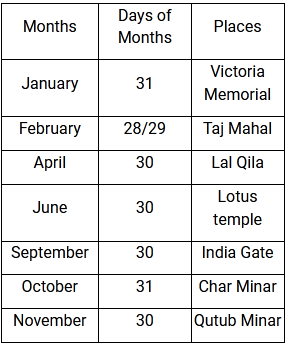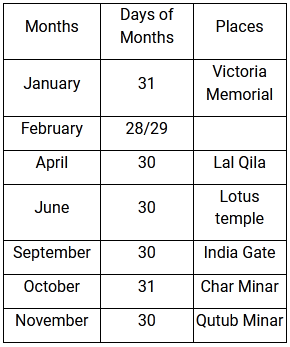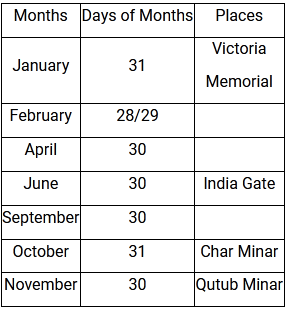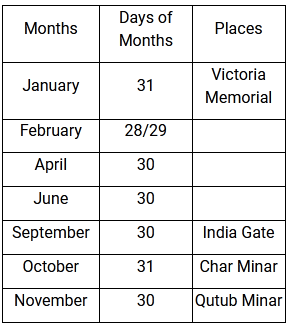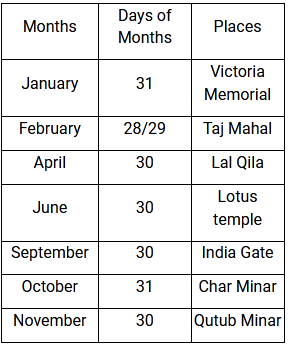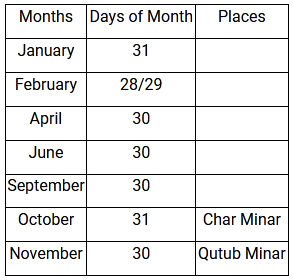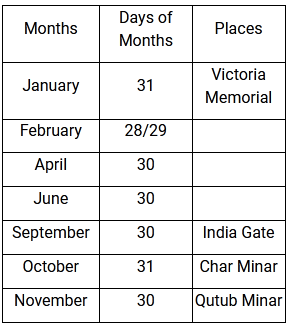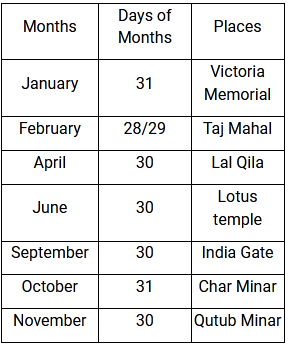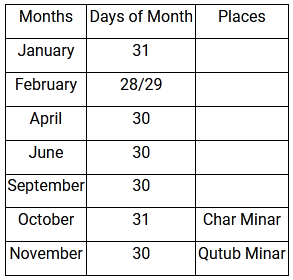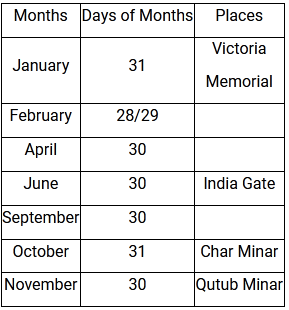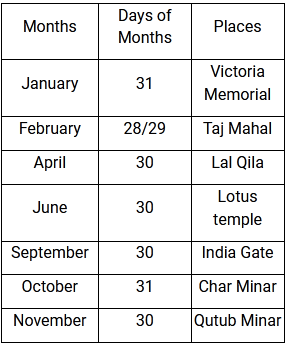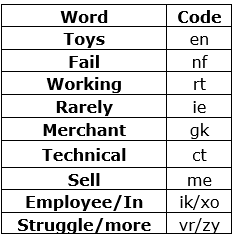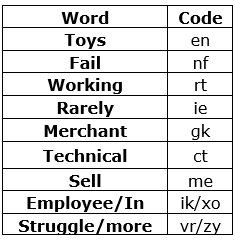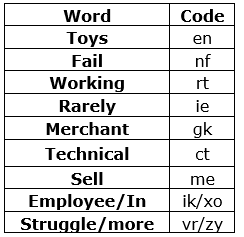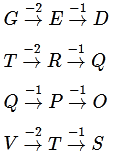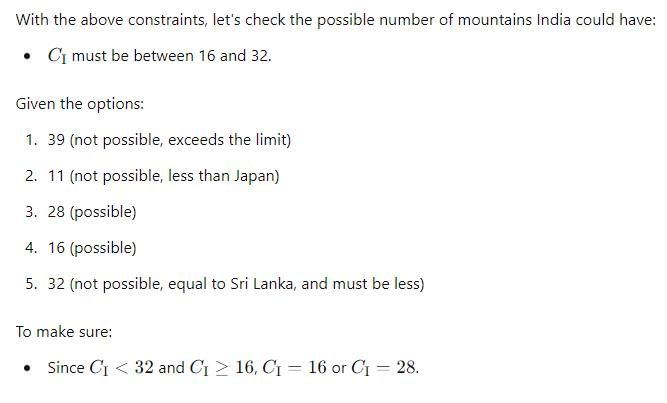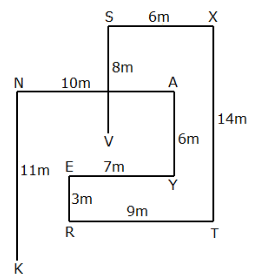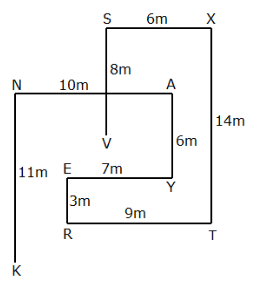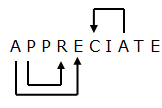IBPS RRB PO (Scale 1) Prelims Mock Test - 3 - Bank Exams MCQ
30 Questions MCQ Test - IBPS RRB PO (Scale 1) Prelims Mock Test - 3
In the question, the relationship between different elements is shown in the statements followed by some conclusions. Find the conclusion which logically follows.
Statements:
K < G ≤ R > D; F > W = R > S ≥ T
Conclusion:
I). S > G
II). F ≥ K
Direction: In the question below are given three statements followed by three conclusions numbered I, II, and III. You have to take the given statements to be true even if they seem to be at variance with commonly known facts. Read all the conclusions and then decide which of the given conclusions logically follows from the given statements disregarding commonly known facts.
Statements:
I: All apple are chickoo.
II: Only orange are chickoo.
III: No apple is kiwi.
Conclusions:
I. No orange is kiwi.
II. All orange are chickoo is a possibility.
III. Some oranges are chickoo.
In the question, the relationship between different elements is shown in the statements followed by some conclusions. Find the conclusion which logically follows.
Statements:
P = J ≥ A ≥ X; Y < J = E ≤ U < Q
Conclusion:
I). X = E
II). J > X
Direction: In the question below are given three statements followed by three conclusions numbered I, II, and III. You have to take the given statements to be true even if they seem to be at variance with commonly known facts. Read all the conclusions and then decide which of the given conclusions logically follows from the given statements disregarding commonly known facts.
Statements:
I. All Watch are Digital.
II. All Digital are Camera.
III. No Camera is anAutomatic.
Conclusions:
I. All Watch are Camera.
II. No Digital is an Automatic.
III. No Watch is an Automatic.
In the question, the relationship between different elements is shown in the statements followed by some conclusions. Find the conclusion which logically follows.
Statements:
A < F < R = Y; H < X < E < T = R > K
Conclusion:
I). K > A
II). X < Y
Direction: In the question below are given three statements followed by three conclusions numbered I, II, and III. You have to take the given statements to be true even if they seem to be at variance with commonly known facts. Read all the conclusions and then decide which of the given conclusions logically follows from the given statements disregarding commonly known facts.
Statements:
I. No Bag is a Box.
II. Some Box are Square.
III. All Square are Circle.
Conclusions:
I. Some Circle are Box.
II. No Box is a Square.
III. Some Square being a Bag is a possibility.
In the question, the relationship between different elements is shown in the statements followed by some conclusions. Find the conclusion which logically follows.
Statements:
D < N < U ≤ B; P > T ≥ F = U < I > E
Conclusion:
I). T > D
II). N ≤ I
Direction: In the question below are given three statements followed by three conclusions numbered I, II, and III. You have to take the given statements to be true even if they seem to be at variance with commonly known facts. Read all the conclusions and then decide which of the given conclusions logically follows from the given statements disregarding commonly known facts.
Statements:
I: All TV are fridges.
II: Some computers are TV
III: All AC are computers.
Conclusions:
I. Some AC are fridges.
II. Some fridges are computers.
III. All TV are computers.
If all the letters in the word "VELOCIRAPTOR" are arranged in the alphabetical order from left to right, then how many letters remain unchanged in their position?
How many pairs of letters are there in the word “CREDIBILITY” that has as many letters between them in the word as in the alphabet?
If the third, sixth, seventh, eleventh and twelfth letter of the word “PALEONTOLOGIST” are taken to form a new five-letter meaningful word, then which of the following letter is the second letter from the right end? If more than one meaningful word is formed, then mark ‘Y’ as your answer; else if no such meaningful word is formed, then mark ‘Z’ as your answer.
Direction: Study the following information carefully and answer the questions given below.
Toukir visited seven different places in seven different months of a year i.e. January, February, April, June, September, October, and November. He visited only one place in a month. He visited more than one place between Victoria Memorial and India Gate. He visited Lal Qila immediately before his visit to Lotus temple but in the month which has not less than 30 days. He went to Char Minar in the month which has 31 days. He visited Qutub Minar immediately after the Char Minar. He visited Victoria Memorial in the month which has 31 days. He visited the Taj Mahal before Char Minar.
Q. Toukir visited which among the following places in the month of June?
Direction: Study the following information carefully and answer the questions given below.
Toukir visited seven different places in seven different months of a year i.e. January, February, April, June, September, October, and November. He visited only one place in a month. He visited more than one place between Victoria Memorial and India Gate. He visited Lal Qila immediately before his visit to Lotus temple but in the month which has not less than 30 days. He went to Char Minar in the month which has 31 days. He visited Qutub Minar immediately after the Char Minar. He visited Victoria Memorial in the month which has 31 days. He visited the Taj Mahal before Char Minar.
Q. How many places did he visit after he visited Lal Qila?
Direction: Study the following information carefully and answer the questions given below.
Toukir visited seven different places in seven different months of a year i.e. January, February, April, June, September, October, and November. He visited only one place in a month. He visited more than one place between Victoria Memorial and India Gate. He visited Lal Qila immediately before his visit to Lotus temple but in the month which has not less than 30 days. He went to Char Minar in the month which has 31 days. He visited Qutub Minar immediately after the Char Minar. He visited Victoria Memorial in the month which has 31 days. He visited the Taj Mahal before Char Minar.
Q. Which among the following is not true?
Direction: Study the following information carefully and answer the questions given below.
Toukir visited seven different places in seven different months of a year i.e. January, February, April, June, September, October, and November. He visited only one place in a month. He visited more than one place between Victoria Memorial and India Gate. He visited Lal Qila immediately before his visit to Lotus temple but in the month which has not less than 30 days. He went to Char Minar in the month which has 31 days. He visited Qutub Minar immediately after the Char Minar. He visited Victoria Memorial in the month which has 31 days. He visited the Taj Mahal before Char Minar.
Q. In which month did he visit India Gate?
Direction: Study the following information carefully and answer the questions given below.
Toukir visited seven different places in seven different months of a year i.e. January, February, April, June, September, October, and November. He visited only one place in a month. He visited more than one place between Victoria Memorial and India Gate. He visited Lal Qila immediately before his visit to Lotus temple but in the month which has not less than 30 days. He went to Char Minar in the month which has 31 days. He visited Qutub Minar immediately after the Char Minar. He visited Victoria Memorial in the month which has 31 days. He visited the Taj Mahal before Char Minar.
Q. In the month of February, he visited _______.
Study the following information carefully and answer the questions given below.
In a certain code language,
"Technical toys fail rarely" is coded as "nf ie ct en"
"Merchant sell working toys" is coded as "me rt en gk"
"Employee fail in working" is coded as "ik nf rt xo"
"Rarely merchant struggle more" is coded as "ie vr gk zy"
Q. What is the code for the word "Sell" in the given code language?
Study the following information carefully and answer the questions given below.
In a certain code language,
"Technical toys fail rarely" is coded as "nf ie ct en"
"Merchant sell working toys" is coded as "me rt en gk"
"Employee fail in working" is coded as "ik nf rt xo"
"Rarely merchant struggle more" is coded as "ie vr gk zy"
Q. Which of the following word denotes the code "ik" in the given code language?
Study the following information carefully and answer the questions given below.
In a certain code language,
"Technical toys fail rarely" is coded as "nf ie ct en"
"Merchant sell working toys" is coded as "me rt en gk"
"Employee fail in working" is coded as "ik nf rt xo"
"Rarely merchant struggle more" is coded as "ie vr gk zy"
Q. If "dynamic monitor struggle" is coded as "al zy ko", then what is the code for the word "more" in the given code language?
Study the following information carefully and answer the questions given below.
In a certain code language,
"Technical toys fail rarely" is coded as "nf ie ct en"
"Merchant sell working toys" is coded as "me rt en gk"
"Employee fail in working" is coded as "ik nf rt xo"
"Rarely merchant struggle more" is coded as "ie vr gk zy"
Q. Which of the following phrase denotes the code "ct rt" in the given code language?
Direction: In the following question, select the one which is different from the other three responses.
Study the following information carefully and answer the below questions
A survey shows that six countries viz. India, China, Sri Lanka, Japan, Canada, and Australia having different number of mountains.
India has more mountains than China. Japan has twice the mountains that China has. Japan does not have more mountains than India. Sri Lanka has more mountains than India but less than Canada. Canada has three mountains less than Australia. The country which has the least number of mountains has 8 mountains.
Q. If Sri Lanka has twice the mountains of Japan, then what could be the mountains that India has?
Study the following information carefully and answer the below questions
A survey shows that six countries viz. India, China, Sri Lanka, Japan, Canada, and Australia having different number of mountains.
India has more mountains than China. Japan has twice the mountains that China has. Japan does not have more mountains than India. Sri Lanka has more mountains than India but less than Canada. Canada has three mountains less than Australia. The country which has the least number of mountains has 8 mountains.
Q. As many countries have more mountains than Sri Lanka is same as less than____?
Study the following information carefully and answer the below questions
A survey shows that six countries viz. India, China, Sri Lanka, Japan, Canada, and Australia having different number of mountains.
India has more mountains than China. Japan has twice the mountains that China has. Japan does not have more mountains than India. Sri Lanka has more mountains than India but less than Canada. Canada has three mountains less than Australia. The country which has the least number of mountains has 8 mountains.
Q. If Canada has sixteen mountains more than Japan, then what is the sum of the mountains in Japan, China, and Canada?
Direction: In the following question assuming the given statements to be true, find which of the conclusion among given conclusions is/are definitely true and then give your answers accordingly.
Statements:
Q = X < R < G; G ≥ T < Y; O > X
Conclusions:
I. O > Q
II. O > G
III. Q = Y
Study the following information carefully and answer the questions given below.
Point K is 11m to the south of point N, which is 10m to the west of point A. Point Y is 6m to the south of point A and 7m to the east of point E. Point T is 9m to the east of point R, which is 3m to the south of point E. Point X is 14m to the north of point T and 6m to the east of point S, which is 8m to the north of point V.
What is the approximate shortest distance between the points N and S?
Study the following information carefully and answer the questions given below.
Point K is 11m to the south of point N, which is 10m to the west of point A. Point Y is 6m to the south of point A and 7m to the east of point E. Point T is 9m to the east of point R, which is 3m to the south of point E. Point X is 14m to the north of point T and 6m to the east of point S, which is 8m to the north of point V
If point O is the midpoint of points A and Y, then what is the distance between points O and V?
Study the following information carefully and answer the questions given below.
Point K is 11m to the south of point N, which is 10m to the west of point A. Point Y is 6m to the south of point A and 7m to the east of point E. Point T is 9m to the east of point R, which is 3m to the south of point E. Point X is 14m to the north of point T and 6m to the east of point S, which is 8m to the north of point V
In which of the following direction is point E with respect to point K?
Direction: In the following question assuming the given statements to be true, find which of the conclusion among given conclusions is/are definitely true and then give your answers accordingly.
Statements:
A > T, E ≤ M, F ≤ T, E < A
Conclusions:
I. A > M
II. F < E
How many such pairs of letters are there in the word "APPRECIATE" which have as many letters between them as there are in the English alphabets (both forward and backward)?




